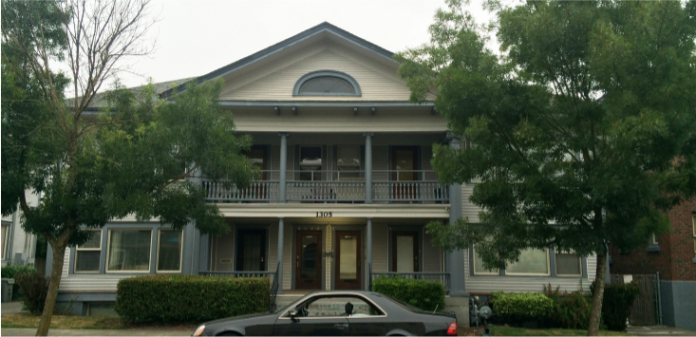Backyard cottages are officially a go in Tacoma but what’s next?
The City of Tacoma has officially adopted new rules which make it much easier to add accessory dwelling units (ADUs) on existing single-home lots. While it is true that Tacoma, like other cities in Washington, already permit attached accessory dwelling units (per state law), like many cities, the City of Tacoma had previously imposed significant restrictions, greatly limiting their adoption.
The new set of rules give much more leeway than the previous set of rules. One of the most significant changes to existing ADU regulations is that accessory dwelling units do not need to be attached to the primary home, allowing for backyard cottages or Detached ADUs (DADUs). Also, it is no longer a requirement that the homeowner actually reside on the property on which the DADU exists.
Other significant aspects of the new rules include:
- There is no longer a lot-size requirement;
- There is no restriction on unrelated residents in ADUs; and
- An extension of the city’s “amnesty program” allows owners who built ADUs without a permit to apply for one before through 2020.
The City of Tacoma’s move to make it easier to build DADUs is in line with the City’s larger residential infill program; it also represents a needed response to rising housing costs in the city and region. But, as I argued in previous coverage of Tacoma’s liberalized ADU policies, allowing for greater numbers of accessory dwelling units in the city’s residential areas is one facet of what ought to be a larger set of policies and programs aimed at increasing access to housing in the city.
What Next?
A more far-reaching response to a lack of housing in general–and housing that is attainable by long-time residents and newcomers alike–will need to take into account all that goes into making a city such as Tacoma livable. This means that accessible and attainable housing needs to be considered alongside other factors, such as the availability of parks and greenspace, walkability, multimodal transit, and the safety of those who need to or prefer to walk or bike.
How housing, the environment, and mobility intersect was taken up on March 14th during the fourth Tacoma Roots Summit. At this event, panelists Dr. Anaid Yerena, Assistant Professor of Urban Studies at University of Washington Tacoma, transit advocate Chris Karnes, and artist and activist Chris Jordan took up, specifically, transit-oriented development, an approach to development which locates high-quality transit at the center of housing and business development.
Cities like Seattle and San Francisco have recently made news in relation to transit-oriented development as transit agencies (e.g., Sound Transit and Bay Area Rapid Transit or BART) each have secured approval to develop land it holds in surplus with an eye toward affordability. While building new housing and retail on corridors served by regular and efficient housing does present people with greater options for getting to and from where they live, shop, and play, it is also true that transit-oriented development raises land values as added amenities and transit access tend to make the area more desirable.
Attainable and Accessible Housing
Unless cities and communities take part and action as soons as the deliberation and planning phases, there is no guarantee that simply building new housing stock and retail adjacent to transit will result in “affordable housing.” Housing that is accessible and attainable––even to those who were present before high-quality transit arrived–requires thoughtful consideration and deliberate actions.
This specific issue was raised at the Tacoma Roots event, even as no satisfactory answer emerged. In truth, there probably isn’t a single answer to the question, “How do we proceed with transit-oriented development in a way that doesn’t result in displacement?” In Tacoma, this is an especially present question as the City, Pierce Transit, and Sound Transit move ahead with policy revisions (i.e., more reasonable ADU regulations) and with transit expansions, such as the extension of Tacoma Link streetcar and the creation of bus rapid transit along Pacific Avenue).
The answer to this question will necessarily be different for Tacoma than it is for places like Seattle or San Francisco. But it is possible to continue doing development in way that promotes ethical and environmentally responsible mobility, and which improves a city’s livability overall.
Developing for People, not Automobiles
What is clear is that any new development in a city such as Tacoma will have to happen in a way that runs counter to our generalized American proclivity to want to get around in single-occupancy vehicles. Simply put, a livable city is a city which does not subsidize private vehicle ownership.
Tacoma offers examples of transit-oriented development and what we might call transit-absent development. The stretch of Pacific Avenue running between the University of Washington Tacoma and the city’s excellent museums offers an example of transit-oriented development: here, residences, business, the university, and public space attract residents at all times of day. While automobiles are accommodated along this corridor (including a small allotment of paid parking along the street), the primary modes of getting to and from this busy area is multi-modal transit. Local and regional buses run through here, as does Tacoma Link.

It is expensive to own and operate a vehicle: any vehicle owner will attest to that. But the cost of owning a vehicle goes beyond a loan payment, an insurance payment, parking fees, and fuel and maintenance costs–all of which add up to about $10,000 per year for the average new car. The total cost of owning a vehicle far exceed these direct consumer costs, since many car costs are externalized on to society, like noise, pollution, carbon emissions, and pedestrian deaths and injuries. As a city, we all share the costs of private vehicle ownership even if we don’t personally own or use a vehicle.
The cost of creating and maintaining automobile infrastructure in cities and metropolitan regions is exorbitant–and we all share in that cost. The gas tax falls way short of paying for car infrastructure. The cost of providing “free” parking for vehicles on streets, shopping centers, schools, etc. is likewise high–and we all share in that cost. Many of us have come to expect that our vehicles will be accommodated; we demand the right of way, access, and ample parking when we are in cars. These are expectations and demands that are proving too costly, both in terms of actual money and in congestion, and also in increased pollution and vehicle-involved injury and death.
Planning for and Developing the Livable City
Fortunately, the City of Tacoma’s relaxing of ADU regulations keeps the exemption already in place for off-street parking requirements. Inviting more people into the city need not be attended to by the assumption that they will want or need a car. If density, walkability, and livability is what we want in Tacoma, then we have to imagine dwellings where people–not cars–live.
Part of insuring accessible and attainable housing will require us to recognize, as Robin Case, the former CEO of Zipcar does, that “it is […] time to recognize how heavily subsidized private automobile travel is–and remove those subsidies.” Removing these subsidies and asking those who want to get around by car to pay the actual cost of this type of mobility, when combined with the type of development that is connected and connects, will result in a healthier, more equitable, and more livable Tacoma in the long run.
Tacoma’s move to allow for more ADUs in the city is a further step in a more livable city, but there is more work to do.

Rubén Casas
Rubén joined The Urbanist's board in 2022. He is a scholar and teacher of rhetoric and writing at the University of Washington Tacoma. He is also the faculty lead of the Urban Environmental Justice Initiative at Urban@UW. In his work and advocacy, Rubén examines how cities and the institutions that comprise them imagine, plan, and build in ways that promote and/or discourage community and a sense of place.


